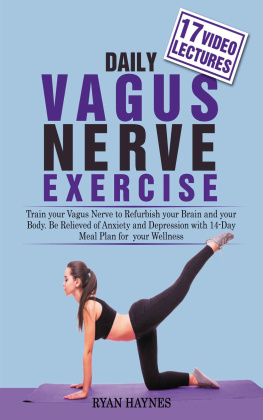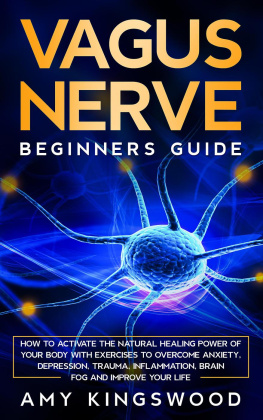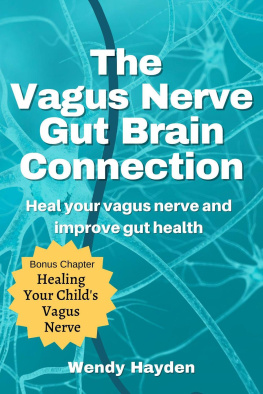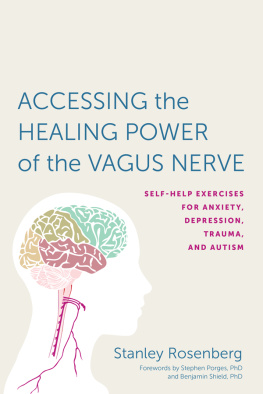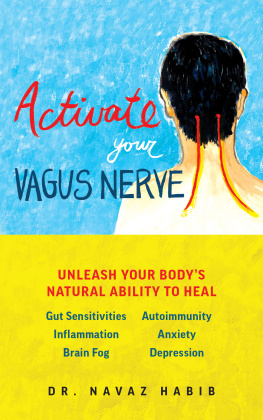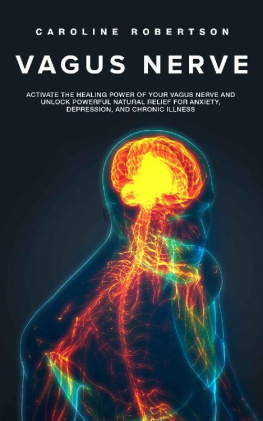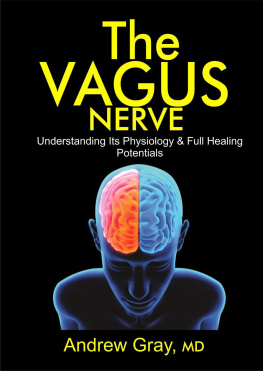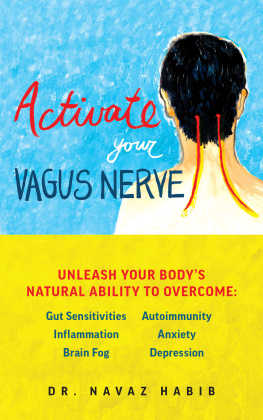DAILY VAGUS NERVE EXERCISES:
A self-help guide to stimulate vagal tone, relieve anxiety and prevent inflammation. with practical exerciSEs and a focus on meditative techniques.
Table of Contents
Introduction
Nervousness can be tricky. It's outlandishly muddled, profoundly close to home, and ridiculously difficult to foresee. There are times when we think our uneasiness is behind usthat we are at last one stage aheadyet something happens, and we are on our heels once more, battling to return to a position of harmony and quiet. We are on the understudies of our uneasiness, and that is the reason seeing precisely how our sensory system functionsand what we can do to quiet itcan be staggeringly enabling.
In any case, what does "quieting your sensory system" indeed mean? Numerous individuals would depict it as easing back the pulse, developing the breath, and loosening up various muscles. But what associates these sensations to the mind? Enabling us to acquaint you with the vagus nerve, the piece of the body that appears to clarify how our psyches control our bodies, how our bodies impact our brains, may give us the instruments we have to quiet them both.
Post-traumatic stress disorder (PTSD) is brought on by people who have experienced a traumatic injury or languish trouble or functional disability. Manifestations incorporate sentiments of re-encountering the horrendous mishap, keeping away from tokens of the damage, uplifted tension and excitement, and negative musings or emotions. Ongoing catastrophic events, mass shootings, psychological oppressor assaults, and urban communities under attack add to the worldwide weight of PTSD which, as indicated by a recent report, influences 46% of the world's population, even though most of the injuries identified with mishaps and sexual or physical savagery. Shockingly, there is no known fix, and flow medicines are not convincing for all patients. A PTSD psychopharmacology committee recently gathered and distributed their accord proclamation, calling for a quick activity to address the emergency in PTSD treatment, referring to three significant concerns.
The US FDA endorses just two medications (sertraline and paroxetine) for the treatment of PTSD. These meds decrease side effects seriousness; however, it may not create a total reduction of side effects. The subsequent concern is identified with polypharmacy. PTSD patients are recommended prescriptions to address every one of their numerous extraordinary and assorted side effects, including nervousness, trouble dozing, sexual brokenness, wretchedness, and interminable torment. The high comorbidity among PTSD and fixation gives further difficulties to pharmacotherapies. The third significant concern is the absence of headways in the treatment of PTSD; no new prescriptions have been endorsed since 2001.
Going past side effect alleviation, the 'best quality level' way to deal with treating PTSD pathology is introduction based treatment, where patients are presented to the tokens of the injury until they figure out how to connect these prompts with wellbeing. Despite the fact that there is proof for adequacy with this methodology, not all patients react entirely to the treatment. Introduction treatment relies on the way toward stifling the adapted dread memory, which is overwhelmed by another mind that creates through rehashed exposures. The patients with nervousness issues and PTSD show weaknesses in their capacity to quench adapted feelings of dread, which could add to the advancement of scatters and may meddle with the progress in treatment. Since the memory of the injury isn't lost at the same time, but rather, upgrades through treatment based on newly learned affiliations that horrible rival alliances, the parity of the two recollections can move after some time, prompting backslide. Different difficulties incorporate the trouble in perceiving and smothering apprehension of every single molded boost and a high dropout rate, which isn't astonishing given that shirking is one of the indications of PTSD.
Numerous creature investigative labs have tried endeavors to create adjunctive medications to quicken or improve the impacts of presentation-based treatments. Spearheading work done by Michael Davis demonstrated that organization of the psychological improving medication d-cycloserine before presenting rodents to unreinforced molded signals upgraded annihilation, and he and his associates, therefore, deciphered the disclosure when they found that d-cycloserine improved the impacts of presentation treatment in patients with understandable fears. In any case, aftereffects of studies evaluating the effects of psychological enhancers as subordinates to presentation treatment are blended on account of PTSD. A conceivable clarification is that medications given before introduction treatment sessions risk fortifying negative affiliations if presentation produces nervousness. Anxiolytic drugs have been attempted in light of proof that these medications ought to improve decency and decrease the tension reaction during the introduction. Nonetheless, results show that anxiolytic medications don't improve the impacts of presentation treatment. One clarification is that the uneasiness reaction is required for accomplishment in introduction treatment since patients must learn not to fear their own dread reaction. Similarly, just as stress can improve the capacity of horrendous mishaps, the tension reaction may upgrade the combination of the termination memory. Predictable with this, anxiolytic medications will, in general, hinder memory combination. A perfect deal would take advantage of the systems that improve the union of horrendous recollections so as to advance elimination recollections that are similarly as solid, at the same time bypassing or maintaining a strategic distance from the aversive pressure reaction.
Developing proof proposes that vagus nerve incitement (VNS) might be a gainful extra to introduction based treatments through its blending of definite improvement of memory combination and neural versatility. Enthusiasm for the vagus nerve (the tenth cranial nerve) as a neuromodulator originates from a long strand of research demonstrating that the vagus nerve fills in as an extension between the fringe autonomic sensory system and the cerebrum. It flags the mind during times of elevated thoughtful movement, advancing quick stockpiling of recollections that are significant for endurance. As a vital aspect of the parasympathetic sensory system, initiation of the vagus nerve neutralizes the thoughtful pressure reaction.
VNS upgrades memory in rodents and people, proposing that blending VNS with an unreinforced introduction to adapted signals may improve the union of the elimination memory. Predictable with this theory, we found that VNS upgraded the elimination of molded dread in rodents. Ample proof shows that VNS advances neural versatility, particularly when it is combined with preparing, and this impact includes VNS regulation of the locus coeruleus noradrenergic framework. We have watched pliancy impacts in the termination related infralimbic prefrontal cortex basolateral amygdala pathway in the wake of blending VNS with a presentation to unreinforced molded prompts, proposing that VNS-improved elimination might be hearty, enduring, and less vulnerable to backslide. In an ongoing report, we found that VNS improved termination of molded dread in a rodent model of PTSD. These rodents express a considerable lot of the biomarkers and conduct phenotypes that are related to PTSD and, significantly, they are impervious to the elimination of molded dread. We found that the VNS organization during elimination sessions switched this termination disability and counteracted the arrival of fear. VNS-treated rodents likewise performed better on the trial of tension, excitement, evasion, and social association's weeks later, demonstrating that inversion of the elimination hindrance meant enhancements in other PTSD indications.



